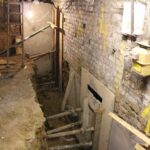Slab foundations are built by pouring concrete directly on the ground. While these foundations don’t usually need reinforcement, they could still experience movement and cracking during frost conditions.
They do not allow for enough space beneath your house, limiting protection from mold, rot or pests and can be costly to repair.
Cost
Concreting Melbourne slab foundations tend to cost less than other forms of foundations due to minimal customization needs and having fewer parts – keeping costs down while not necessitating as much reinforcement than crawl space or pier and beam foundations.
While concrete blocks are relatively durable and suitable for earthquake zones, they are more vulnerable to lateral forces and temperature/moisture changes which could result in costly foundation crack repairs.
Concrete slab foundations offer many benefits for homes. Mold and pests cannot thrive under them, while air can’t move freely around it; thus reducing energy bills. Builders will also have to install sewer/septic line pipes, water supply lines and electrical conduits before pouring the concrete, increasing initial costs significantly.
Durability
A concrete slab foundation consists of a flat, solid piece of concrete laid directly onto the ground. This foundation supports load-bearing walls and the house above it as well as all internal plumbing lines including drain and supply lines, gas lines and conduits for other utilities. Unfortunately, due to being enclosed within concrete, pipes encased by it are more difficult to access when repairs need to be performed making repair costs considerably higher compared to homes built with crawl spaces.
Slab foundations offer homebuilders an economical alternative to basement or crawl space construction costs. Slab construction is relatively quick and simple; builders simply place footings on the groundwork before pouring all at once the concrete slab. Post-tension cables or steel rods may also be added for increased strength of the foundation. Once it has set for 48 hours before being ready to be walked on.
Accessibility
Homeowners building on a slab foundation don’t need to worry about cold air heaving up soil like they would with crawl space foundations, while it may also be less expensive and faster to construct as no footings or walls need to be constructed prior to pouring concrete. Furthermore, this method speeds up construction time.
However, one drawback of building on a slab foundation can be accessing plumbing for repairs or replacement, with pipes often enclosed by concrete that makes leak detection more challenging than in crawl spaces. Furthermore, these types of foundations do not offer as much insulation resulting in increased heating costs; an experienced professional familiar with your climate and soil conditions should help determine whether a slab foundation would work for your new home.
Maintenance
Since the 1970s, concrete slab foundations have become the go-to choice when building homes from the ground up. Unfortunately, as with other foundations, slab-on-grade foundations can present problems if not maintained appropriately.
One of the primary issues associated with slab-on-grade foundations is upheaval. This occurs when certain areas of a foundation actually rise due to factors like water in clay soil.
Slab-on-grade foundations often experience leaky plumbing fixtures due to being embedded within the foundation, making repairs more complex if any pipes leak or rupture.
Not only can sealants protect concrete slabs against water damage, they can also provide UV protection and keep dirt off of its surface – helping you save on long-term maintenance costs.



